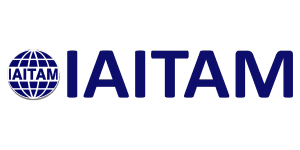Enhancing Reverse Logistics and ITAD Maturity for Greater Security and Efficiency

Coming out of ACE & teaching CITAM this month, there was a very strong sense of urgency & purpose to heighten the relative maturity of organizations ‘Reverse Logistics’ disciplines. IAITAM recognizes & aligns this with ITAD contracting & processes. The primary feedback from the market is that this KPA is not centralized or governed as effectively & efficiently as the other 11 KPAs. Since the supply chain constraints during the pandemic have been resolved, the value of remarketing disposed of IT assets has reached record lows. Consequently, organizations are faced with rising costs & risks associated with End-of-Life (EoL) or decommissioning lifecycle services.
Above all else, the market and more specifically, IAITAM Member organizations, CITADs, and their Corporate Governance & Regulatory (CGR) Executives are seeking Security & Reliability. They’re willing & able to invest/spend more for data security in the context of confirming ITAD Vendors are compliant and strict chain of custody controls are in place. As a result, seemingly every conversation came back to the need for an enhanced strategic review of their technology plans. At the end of the proverbial day, CITAMs are entrusted with realizing the greatest ROI for their technology investments such that they can earn their organization’s trust & confidence to ‘turn their technology’ as effectively & efficiently as possible.
Whereas in previous ACEs, SAM/FinOps, and automation seemed to be the primary ITAM business drivers, this year the interest & focus was on reverse logistics/ITAD, data management, documentation, and new regulations impacting the market and our profession.
Given the proliferation of new & emerging technologies such as LLM/AI, IoT, ML, etc. will enhance organizational productivity. Recognition that the creation & utilization of data to run the business is of ultimate importance. Therefore, there’s nothing more valuable than Data Security throughout the lifecycle of IT assets. In other words, corporations can invest in safe, secure, and reliable supply chains & reverse logistic capability. The ability to virtually ‘own’ an organization’s IT logistics from cradle to grave is becoming a competitive advantage but must start at the acquisition/provisioning stage.
The #1 issue that keeps Executives up at night is Data Security. The #1 issue that keeps CTOs up at night is the realization that their central repository of truth (AMDB/CMDB) is not complete, let alone accurate! The #1 organizational issue plaguing the market is ‘lost and/or stolen’ data-bearing devices. The #1 organizational challenge coming out of the pandemic is reclamation of IT assets. The #1 objective of the corporate Board of Directors is to attract investors by assuring them that their data (IP, customer, employee, etc.) is secure. The #1 responsibility of the CFO is to forecast future spend as accurately as possible to compete in their respective vertical market(s). Technology utilization and/or the optimization of an organization’s technology investments is a primary competitive differentiation.
Bottom line, to accurately budget & forecast ‘tech turns’ requires the CITAMs of organizations to know who, what, when, where, why, and how technology is being used in their operating environment. More directly, it’s the ability to measure, report, and therefore manage the data residing on or through distributed IT assets that is more valuable than oil or gold and truly the lifeblood of a business. This requires CITADs to get ‘ahead of the curve’ and upstream in terms of prospect & Customer communications.
Hyperscale, digital transformation, cloud migrations, and simple Win11 upgrades drive organizational efficiency. The ultimate goal is to drive costs & risks out of the distributed computing model while enhancing the effectiveness of ITSM resources. From a TCO perspective, no one wants to pay for maintenance & support for under-utilized or idle IT assets and account for more ‘lost and/or stolen’ data-bearing assets.
Legislation & regulations are intended to drive societal behavior and influence economic activities. SOX, ESG initiatives, SEC’s Cybersecurity 96 Hour, and the forthcoming 2024 HIPPA Security requirements are clear examples of the increase value of data & IT operations. These market influences in conjunction with an influx of data breaches & cyber-attacks are requiring organizations to document & report on their reverse logistic management capabilities. In other words, least-cost ITAD services are longer the primary criteria and vendor (especially downstream subcontractor) certifications are much more than merely a requirement going forward. This is where & why I’m of the opinion that consolidation in the traditional ITAD market is on the very near horizon.
The tremendous surplus of allocated data-bearing IT assets remains a primary concern and business driver around the world for organizations coming out of the pandemic and returning to their Offices. Simply writing them off is no longer an acceptable practice for all the reasons previously stated. With new rollouts and upgrades budgeted for and on the near-term horizon, it’s more critical than ever before to ‘start with the end in mind’. Knowing an organization’s depreciation schedule and/or the technology refresh rate is a strategic 1st step. Based on environmental stewardship initiatives and Zero-Waste commitments to sustainability, the acceleration of a circular economy is an economic tsunami for qualified reverse logistics providers.
CITAM’s alignment with Corporate Governance is becoming more critical due to their ability to execute Risk Assessments & internal audits. The Chief Procurement Officer, Information Security Officer, and of course the CIO/CTO and CFO align with their customers (and prospects) fiscal year budget cycle plans and projections. From a tactical point solution perspective, clearly the organization’s certified ITAM, HAM, SAM, MAM, ITAD, and/or Security Expert have a vested interest in maturing the organization’s IT lifecycle management disciplines. In fact, ‘starting with the end in mind’ also resonates strongly with the DR/BC Team, too.
The primary ‘points of pain’ organizations are facing today is founded on the fact that virtually all businesses are mired in uncertainty, lack of cooperation, and understanding of how to centralize and automate those core business functions that are required by the business to execute those business functions through the optimization of their technology investments. Other ‘points of pain’ include the concept & execution of such primary business objectives as Zero-Trust (data security), Zero-Waste (sustainability), Compliancy (environmental, SW entitlements, Certificate of Disposition, etc.), Cost Controls & Accountability (Sarbanes-Oxley), ESG Initiatives, and Contracting ethical, reliable, and trust-worthy vendors/business partners.
Some of the primary benefits and value that IAITAM delivers to the market today include streamlined business processes that enable re-use of IT assets rather than requiring net-new acquisitions, duplication, redundancy, rogue-buying/shadow IT, and exponentially increased risks in data security and run-away costs. Improved IT lifecycle reporting and technology utilization will deliver greater ROI across the entire IT portfolio through standardization. One of the greatest benefits to ‘starting with the end in mind’ is enhanced control, predictability, and data security. It will be interesting to see & hear how much our ACE will enhance our Members success in the market by next year at this time.
